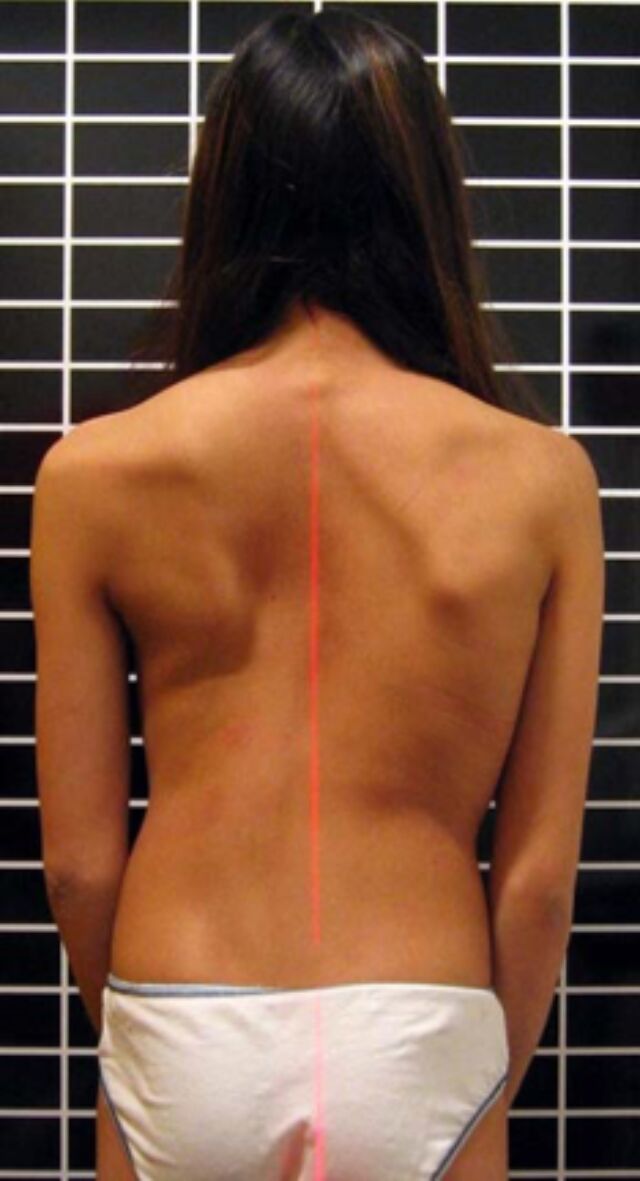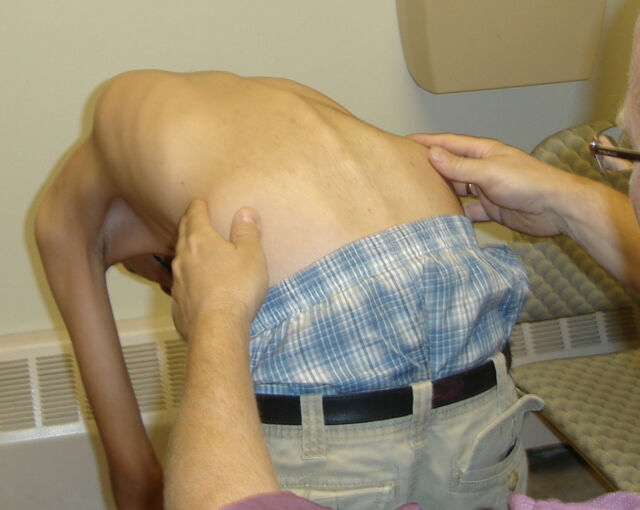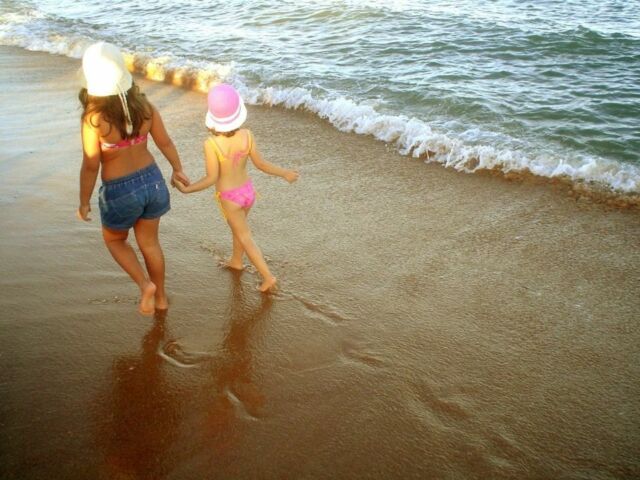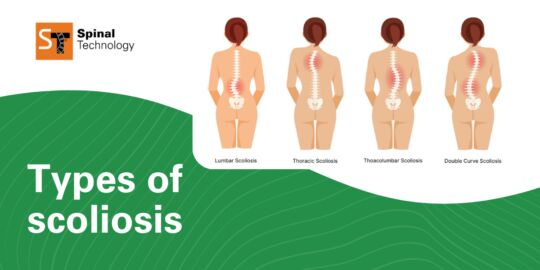Early Detection of Scoliosis
When scoliosis is detected early, there is a greater chance of being able to stop the spinal curve's progression in children who are still growing. The child's age and the degree of the spinal curve will determine the best steps for treatment. When scoliosis goes undetected, most children whose curve is so severe (50 degrees or greater) often have surgery.
The Scoliosis Research Society, American Academy of Pediatrics, and American Academy of Orthopaedic Surgeons recommend that girls get screened twice at ages 10, and 12 and boys get screened once at age 13 or 14.

1. Stand up Straight.
Observe your child from the back.
- Are the shoulder blades at the same height?
- Is their back curved at all?
- Is one shoulder higher than the other?
- Does one arm look slightly farther away from the body than the other?

2. Have your child bend forward.
You are looking for signs that:
- one hip is lower than the other
- one side of the ribcage is higher than the other
- uneven lower back

3. How does their clothing hang?
- Is the hem of a skirt or dress even?
- Does their shirt appear crooked?
- Is one pant leg longer than the other?

4. Watch as your child walks.
- Do they have a slight limp?
- Does one leg look shorter than the other?
- Does their body lean to one side?

5. Does Scoliosis run in your family?
- Do you have scoliosis?
- Did anyone in your family have scoliosis?
It is not 100% certain that if there is scoliosis in your family it will automatically be passed down to your children. However, it is important to know your family health history. The Scoliosis Research Society says about 1 in 3 children whose parents have scoliosis will develop scoliosis. It’s considered a partially genetic condition. Doctors do not yet know exactly what gene can cause it.
It is often more comfortable to perform any of these home diagnostics with your child in the privacy of somewhere they are comfortable. You know your child better than anyone. If you observe any of the above signs, it is important to have a medical professional take a look as soon as possible to diagnose scoliosis early. Early detection allows for a variety of treatment options.


